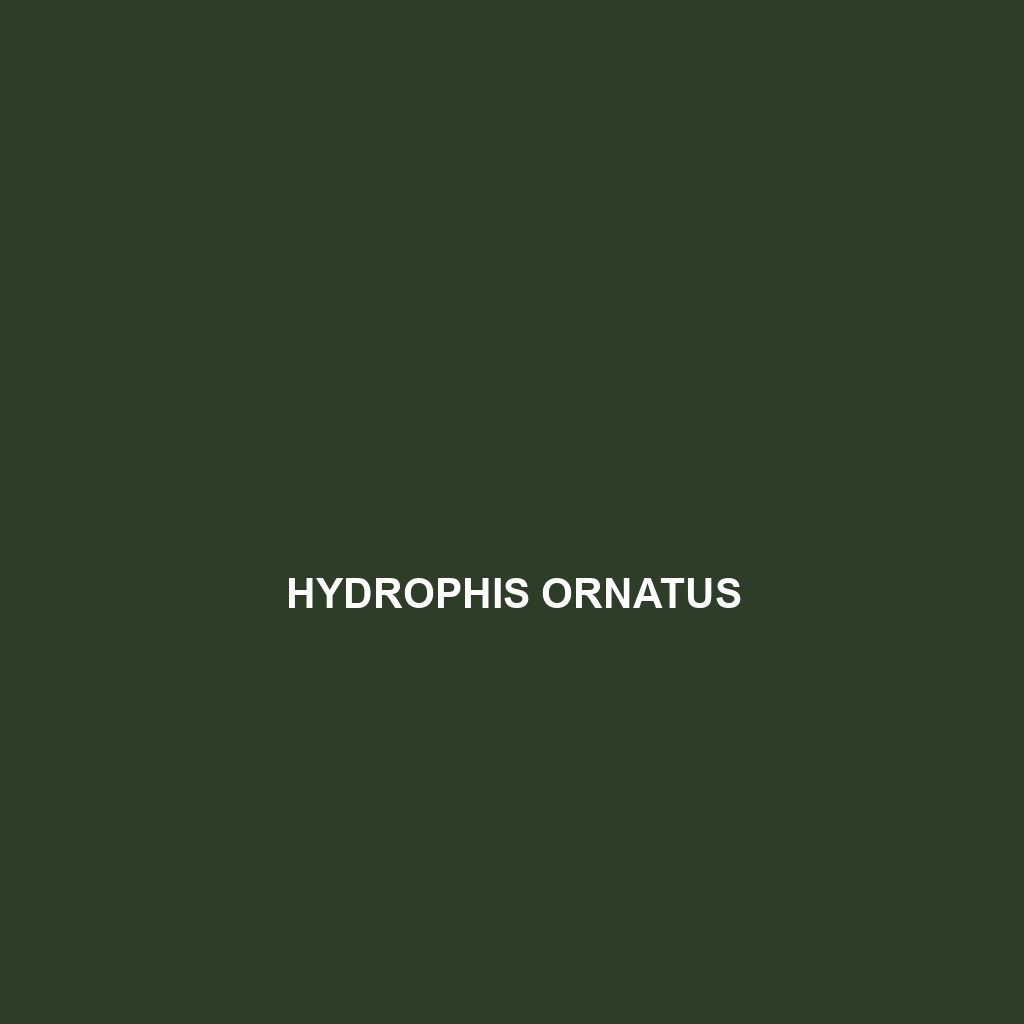Common Name
Hydrophis ornatus
Scientific Name
Hydrophis ornatus
Habitat
Hydrophis ornatus, commonly known as the ornate sea snake, is primarily found in the warm coastal waters of the Indo-Pacific region. This species thrives in a variety of marine habitats, including shallow coral reefs, estuaries, and coastal lagoons. The ornate sea snake is particularly abundant in areas where the underwater structures provide ample shelter and hunting grounds. With its preference for warmer climates, Hydrophis ornatus is often observed in waters ranging from tropical to subtropical environments, making it a characteristic inhabitant of such biodiverse ecosystems.
Physical Characteristics
One of the most distinctive features of Hydrophis ornatus is its striking coloration. This species showcases beautifully patterned scales with shades of yellow, green, and brown, providing excellent camouflage among the vibrant corals and sea grass. Adults typically reach an average length of 1.8 meters (about 6 feet), though some individuals may grow longer. The body is slender and elongated, characterized by a flattened tail that aids in swimming gracefully through its aquatic environment. The ornate sea snake also possesses small, but sharp fangs, which enable it to capture prey efficiently.
Behavior
Hydrophis ornatus is primarily diurnal, showcasing activity during the day while hunting for food. It exhibits a solitary lifestyle, with individuals often found alone, except during mating seasons. When adult snakes interact, they often display dominance behaviors, which sometimes involve wrestling or tangling. Mating rituals in this species are known to be quite unique, involving complex courtship displays where males show off their vibrant colors to attract females. Additionally, during the warmer months, these snakes may venture into shallow waters, reflecting their adaptive behavior to environmental changes.
Diet
The diet of Hydrophis ornatus is predominantly carnivorous, primarily feeding on small fish, crustaceans, and occasionally mollusks. This snake utilizes its keen eyesight and swift swimming abilities to hunt down prey. Known for employing ambush techniques, Hydrophis ornatus often waits patiently among rocky crevices or coral reefs until an unsuspecting fish comes close. Interestingly, this species can consume large prey relative to its body size, enabling it to sustain long periods between feeding sessions.
Reproduction
The reproductive cycle of Hydrophis ornatus typically occurs between the months of July and September. Males engage in elaborate courtship behaviors to attract females, which can involve entwining and rubbing together. After successful fertilization, females bear live young—a characteristic of viviparous reptiles. The average litter size ranges from 3 to 15 offspring, depending on the age and size of the female. After parturition, mothers exhibit little to no parental care, leaving the neonates to fend for themselves almost immediately.
Conservation Status
At present, Hydrophis ornatus is classified as Least Concern by the International Union for Conservation of Nature (IUCN). However, it faces threats due to habitat loss from coastal development, pollution, and climate change. Conservation efforts are critical, focusing on preserving its natural habitats and raising awareness about the significance of marine biodiversity. Ongoing research continues to monitor populations and assess the impact of human activities on their ecosystems.
Interesting Facts
One of the most intriguing facts about Hydrophis ornatus is its ability to tolerate saline water, a trait that allows it to thrive exclusively in marine environments. Interestingly, it is also known to have a unique feature known as the “bradycardia reflex,” which allows it to slow its heart rate during dives, conserving energy and oxygen while patrolling for food. Additionally, this sea snake is considered an important indicator species for the overall health of marine ecosystems, as its presence signifies a balanced environment.
Role in Ecosystem
In its native habitat, Hydrophis ornatus occupies a crucial ecological niche as both a predator and prey species. As an agile predator, it helps maintain the population dynamics of small fish and crustaceans, contributing to the stability of the marine food web. Furthermore, this sea snake serves as a food source for larger marine animals, including sharks and larger predators. By participating in these diverse interactions, Hydrophis ornatus plays a vital role in maintaining the health and biodiversity of marine ecosystems.
